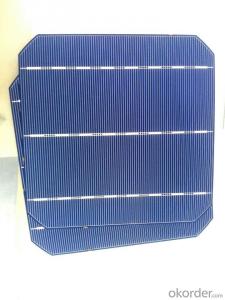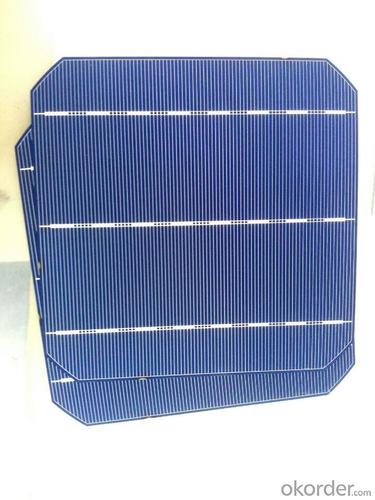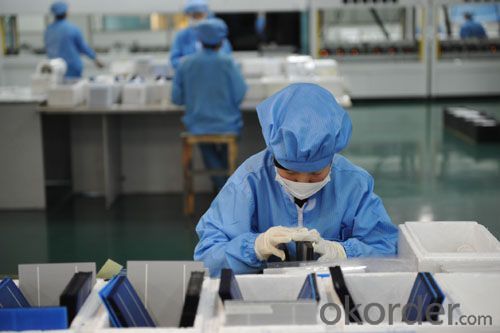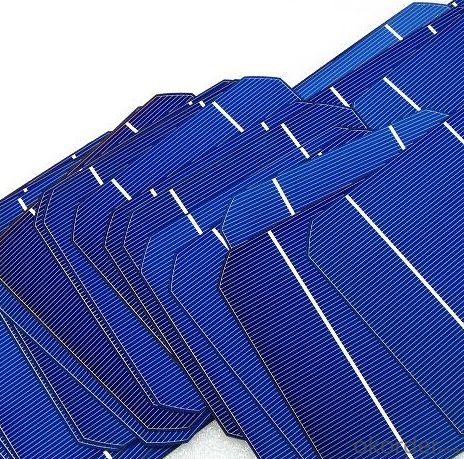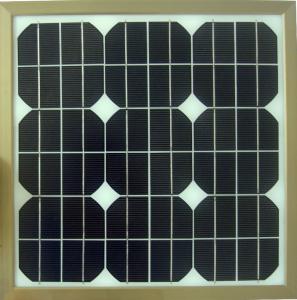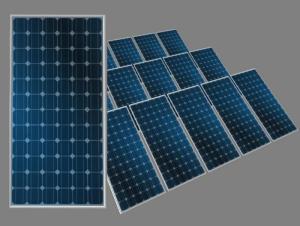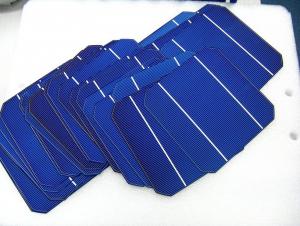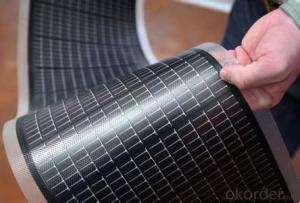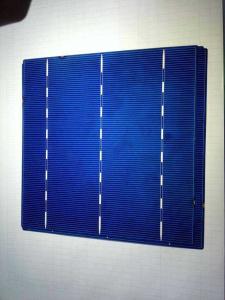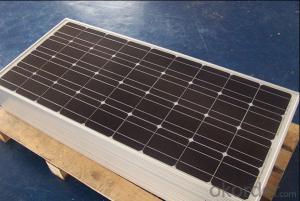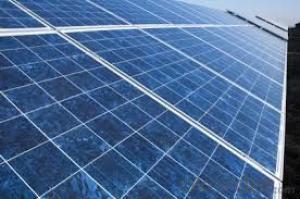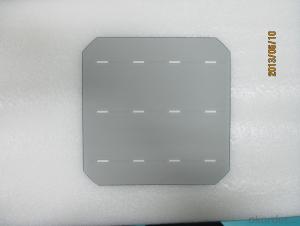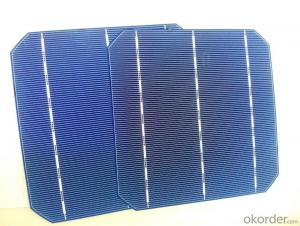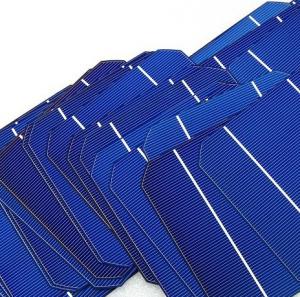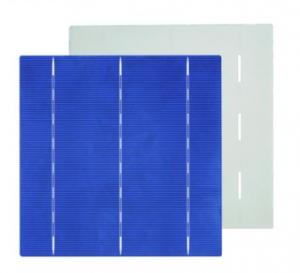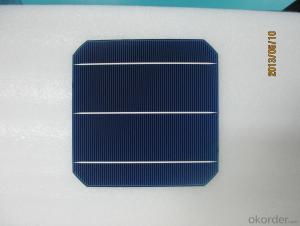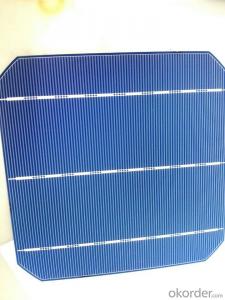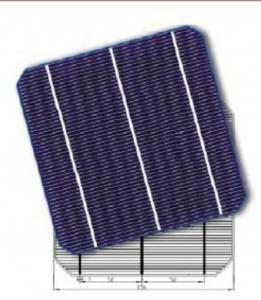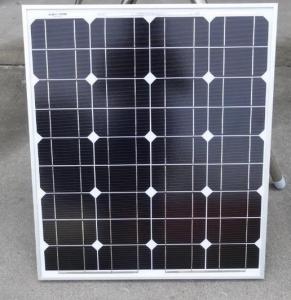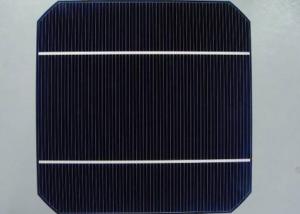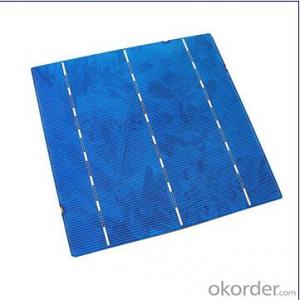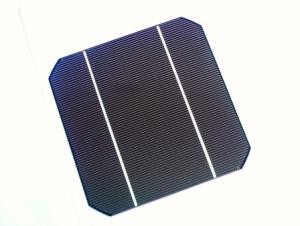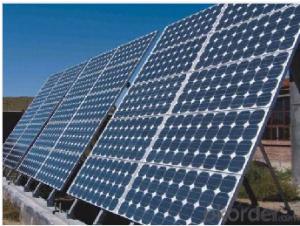High Efficiency Solar Cells Price - Monocrystal Solar Energy Cell 156x156mm 18.1% Efficiency
- Loading Port:
- China Main Port
- Payment Terms:
- TT or LC
- Min Order Qty:
- -
- Supply Capability:
- 1000000 PCS/month
OKorder Service Pledge
OKorder Financial Service
You Might Also Like
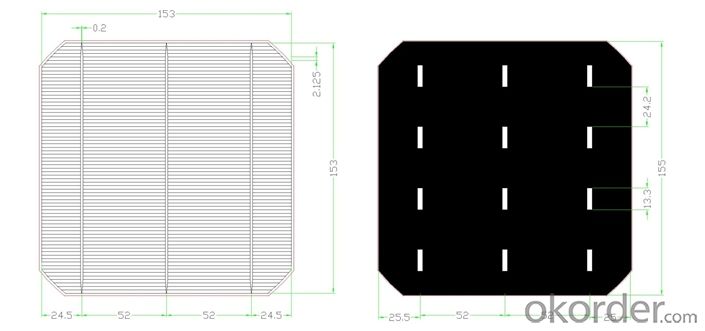
Monocrystal Solar Energy Cell
type:156M
appearance:156×1565㎜±0.5mm;diagonal:R=100mm
Main fence wide:1.4-1.5mm back electrode wide:2-2.5mm
Fence line qty:90
Cell thickness:220um±20um
18.10- 18.20 |
4.33 |
8.73 |
8.21 |
0.631 |
0.528 |
78.7 |

remark:our company cells as per working current concentrate principle,separate the first and the second grade
Factory Picture of Solar Cells
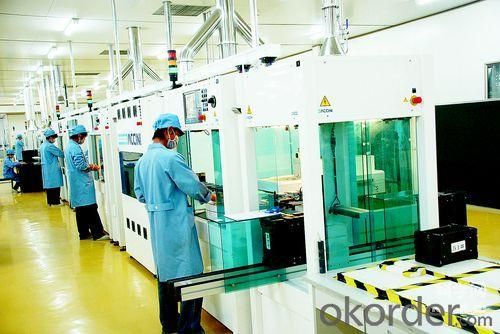
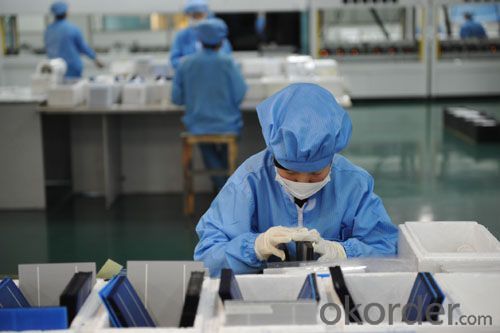
FAQ
We have organized several common questions for our clients,may help you sincerely:
What’s price per watt?
A: It’s depends on the quantity, delivery date and payment terms of the order. We can talk further about the detail price issue. Our products is high quality with lower price level.
Can you tell me the parameter of your solar cells?
We have different series of cells with different power output, both from c-si to a-si. Please take our specification sheet for your reference.
How do you pack your products?
We have rich experience on how to pack the panels to make sure the safety on shipment when it arrives at the destination.
Can you do OEM for us?
Yes, we can.
How long can we receive the product after purchase?
In the purchase of product within three working days, We will arrange the factory delivery as soon as possible. The perfect time of receiving is related to the state and position of customers. Commonly 7 to 10 working days can be served.
- Q: What is a monocrystalline Silicon Solar Cells?
- A monocrystalline Silicon Solar Cell is a kind of solar cell made of monocrystalline siclicon that has been used for many years. Because it is used in a way that is very unique in their use of a single, very pure crystal of silicon, It is considered to good for longevity.
- Q: Can solar cells be used to charge batteries?
- Yes, solar cells can definitely be used to charge batteries. Solar cells convert sunlight into electricity, which can be used to charge batteries for various applications such as powering small devices or storing energy for later use.
- Q: Can solar cells be used in remote locations?
- Yes, solar cells can be used in remote locations. Since solar cells generate electricity from sunlight, they do not require access to a power grid, making them an ideal solution for remote areas where traditional power sources may not be readily available. Additionally, advancements in solar technology have made it possible to store excess energy in batteries, ensuring a continuous power supply even during periods of low sunlight.
- Q: Can solar cells be used to power irrigation systems?
- Yes, solar cells can be used to power irrigation systems. Solar panels can convert sunlight into electricity, which can then be used to power pumps, motors, and other components of an irrigation system. This renewable energy source can provide a sustainable and cost-effective solution for powering irrigation systems, especially in remote or off-grid locations.
- Q: Can solar cells be used in satellite or space exploration missions?
- Yes, solar cells can be used in satellite or space exploration missions. In fact, they are extensively utilized in these missions to provide power to spacecraft and satellites due to their ability to convert sunlight into electricity efficiently.
- Q: Can solar cells be used in remote areas with no access to electricity?
- Yes, solar cells can be used in remote areas with no access to electricity. Solar cells convert sunlight into electricity, making them a reliable and sustainable source of power in areas where grid connectivity is absent. They are particularly well-suited for remote locations due to their portability, low maintenance requirements, and ability to generate electricity even in harsh environmental conditions.
- Q: Can solar cells work in cloudy weather?
- Yes, solar cells can still work in cloudy weather, although their efficiency may be reduced. Clouds diffuse sunlight, causing a decrease in the amount of direct sunlight reaching the solar cells. However, solar cells can still generate electricity from the diffused sunlight, although at a lower rate compared to sunny conditions.
- Q: What materials are used to make solar cells?
- Solar cells are primarily made using materials such as silicon, which is the most commonly used material, as well as other semiconductor materials like cadmium telluride, copper indium gallium selenide, and perovskite.
- Q: Can solar cells be used for powering offshore oil rigs?
- Yes, solar cells can be used for powering offshore oil rigs. They provide a sustainable and reliable source of energy, reducing the reliance on fossil fuels and minimizing the environmental impact. Additionally, advancements in solar technologies have made them more efficient and capable of withstanding harsh offshore conditions, making them a viable option for offshore oil rig power generation.
- Q: What is the impact of solar cell installations on greenhouse gas emissions?
- Solar cell installations have a significant positive impact on reducing greenhouse gas emissions. By harnessing the power of the sun to generate electricity, solar cells eliminate the need for fossil fuel-based energy sources, which are major contributors to greenhouse gas emissions. As more solar cells are installed and integrated into the energy grid, the overall emissions from the electricity sector decrease, making solar cell installations an important solution towards mitigating climate change.
Send your message to us
High Efficiency Solar Cells Price - Monocrystal Solar Energy Cell 156x156mm 18.1% Efficiency
- Loading Port:
- China Main Port
- Payment Terms:
- TT or LC
- Min Order Qty:
- -
- Supply Capability:
- 1000000 PCS/month
OKorder Service Pledge
OKorder Financial Service
Similar products
Hot products
Hot Searches
Related keywords
